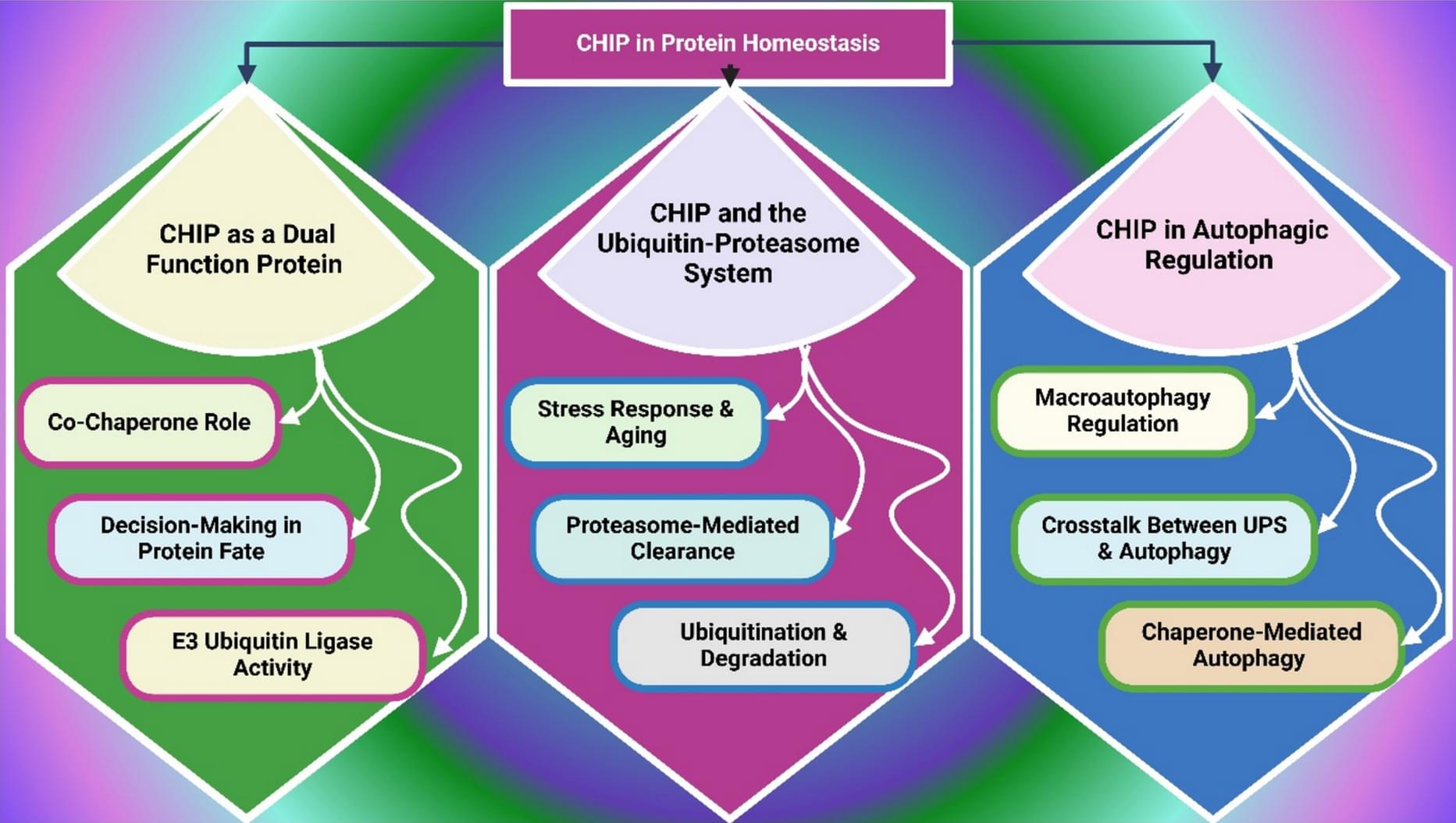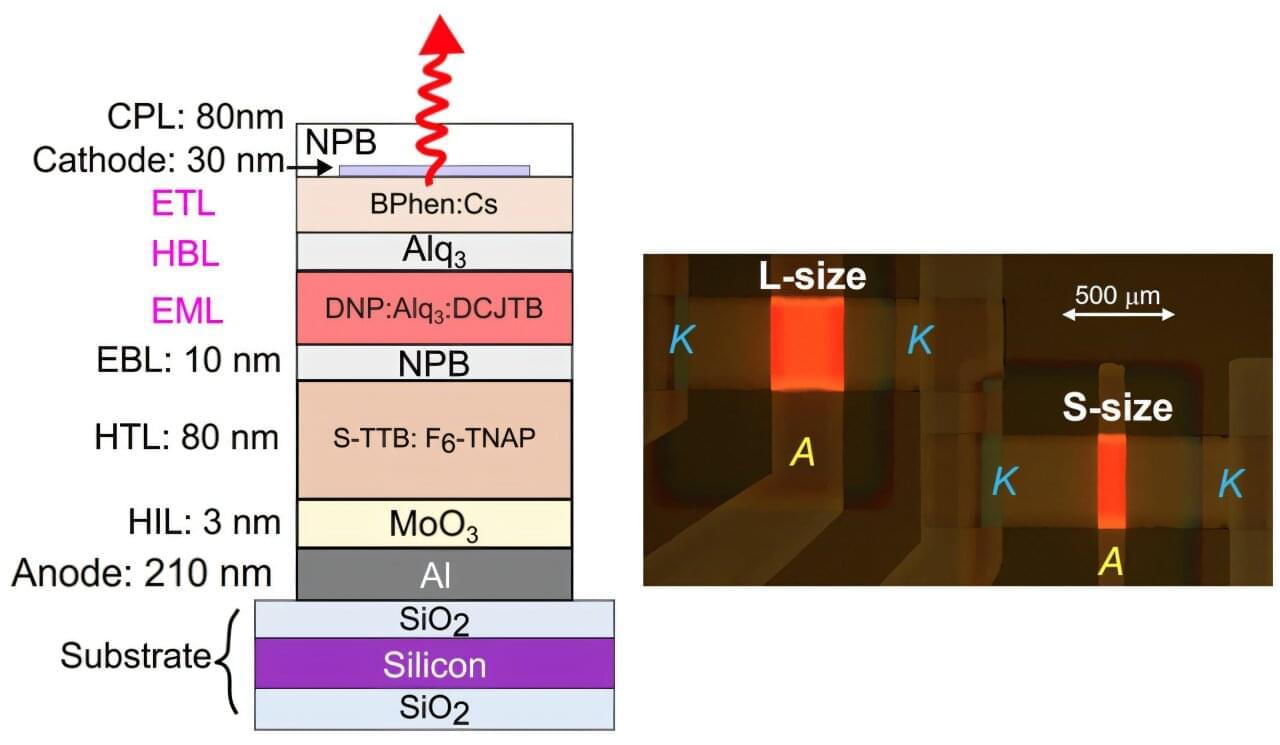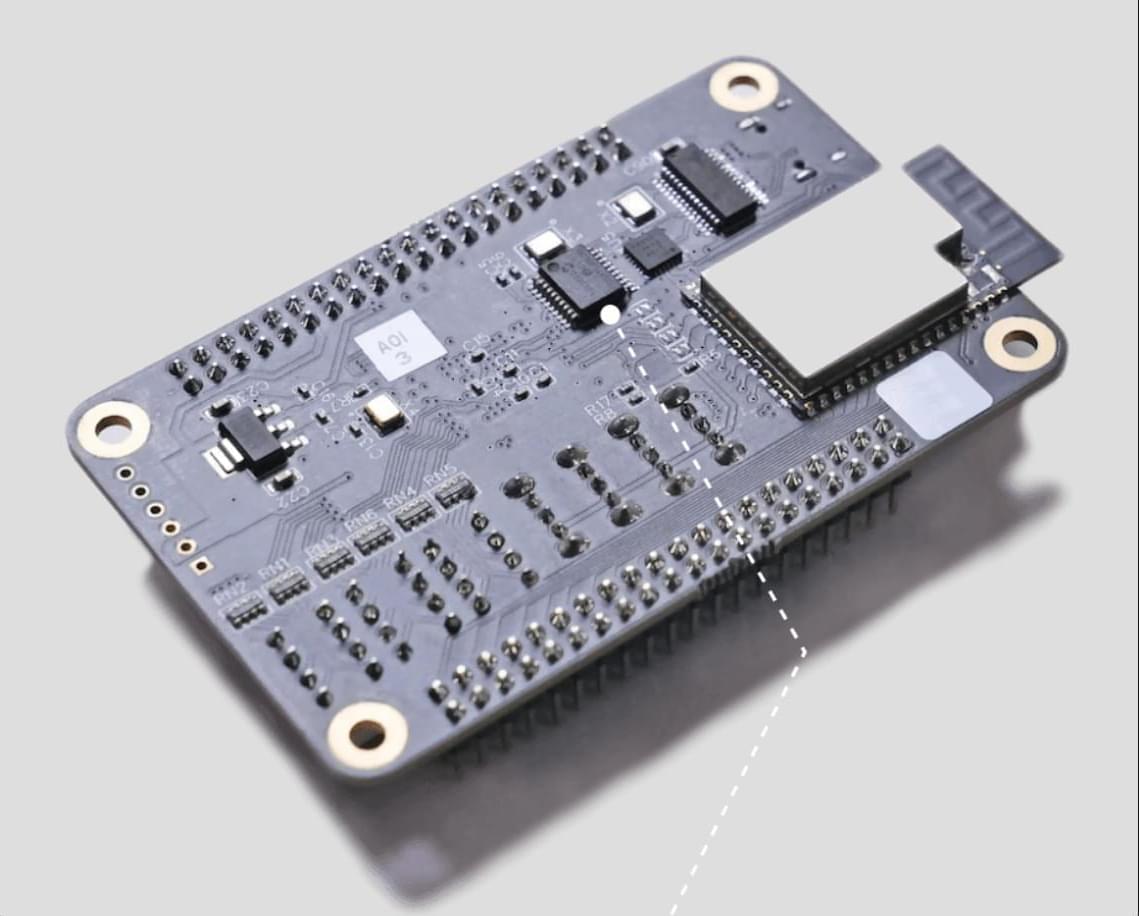Degradation of proteostasis, mitochondrial function, and cellular stress resistance results in a build-up of damaged proteins, oxidative insult, and chronic inflammation, characteristic of aging. CHIP is essential for maintaining protein quality control and cellular homeostasis by having dual E3 ubiquitin ligase and co-chaperone activities. CHIP facilitates proteostasis by maintaining proteostasis in misfolded, aggregated proteins by promoting their degradation. Mitochondrial dysfunction, oxidative imbalance, and cellular senescence are caused by its age-associated decline and contribute to neurodegenerative, cardiovascular, and oncogenic disease pathogenesis. Examples of recent pharmacological and gene-based strategies to correct CHIP and restore stress resilience have been made.









